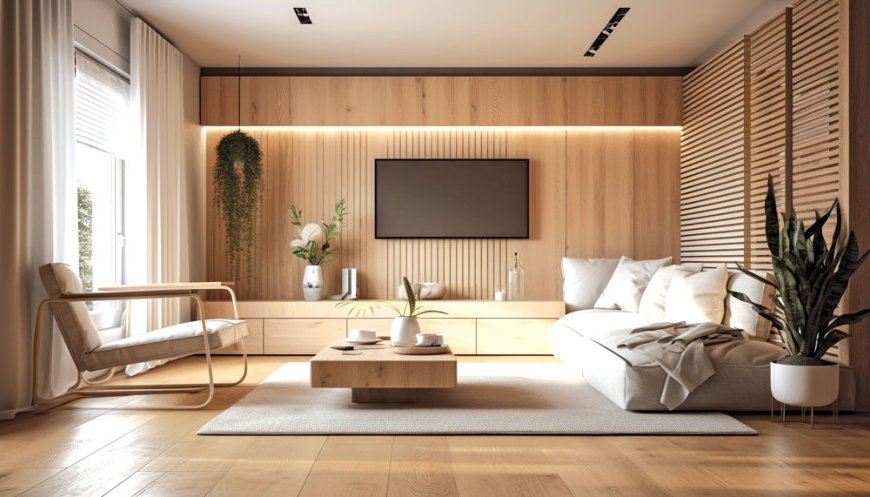Sustainable symphony: Crafting a greener future with wooden architecture

Embedded within the rich tapestry of construction history, wood stands as an enduring and venerable building material, playing a pivotal role across the ages. Its legacy begins from the construction of timber homes in the Mesolithic period, seamlessly extending to the craftsmanship of contemporary rustic log cabins. Wood is more than just a material; it is a sturdy and essential foundation that permanently alters the course of architectural development.
A compelling tale of sustainability
At a time when the imperative to combat climate change looms large, wooden architecture unfolds a compelling narrative of environmental responsibility and sustainability. This becomes particularly significant for an industry long criticized as a contributor to pollution, the widespread use of wood signals a welcome change in that direction. A wide range of opportunities have emerged for the construction industry, ranging from the conventional plywood to the innovative engineered wood. With an astounding 10-12% year-over-year growth rate, the Indian wood industry is estimated to be headed towards a more promising and sustainable future. Forecasts show a significant 7.72% growth between 2024 and 2028, translating into an overall market volume of US$1.36 billion. Wood is an incredibly useful and renewable resource that is essential to encouraging environmentally friendly behaviours and maintaining a healthy ecosystem.
Unorganized landscape of wood sector
Despite the evolution of architecture in India, the creation of wooden furniture or interiors often prompts a homemaker's first response to search for a carpenter. Consequently, this sector remains largely unorganized, with branded manufacturers or traders capturing only 20-25% of the market share. However, it is fair to note that this trend is progressively shifting as consumer awareness grows, with quality becoming paramount to interior designers, architects, and homeowners.
Engineered wood & evolving architectural frontiers
Derived from real wood waste such as sawdust and wood fibers, engineered wood is made from real wood waste which are then attached to one another using adhesives. Plywood, the most popular form of engineered wood, commands almost 60-65% of the market share in the wood industry in India. Following closely is the innovative Medium-Density Fibreboard (MDF) segment, expected to surpass plywood, with an estimated market size of 80,000 crore. Although the market for laminates and particle boards is still in its nascent stage, wood's potential in contemporary construction is still vastly untapped.
Futuristic trends in modern architecture
Wood continues to be the preferred material for architectural projects despite their growing complexity. It is becoming more and more popular to incorporate biophilic design concepts into architecture, as qualities like moisture resistance and conformity to E1 emission regulations become industry norms for wood. Connecting people with the healing nature through use of lush gardens and wood feels extremely otherworldly even as we spend much time in a virtually connected world.
The allure of wood in modern architecture will certainly persist for a long time to come. The growing popularity of external wood cladding trends, which ideally complements the enduring minimalist trend in modern design, emphasizes its relevance. Echoing a modest yet sophisticated persona, another noteworthy, engineered wood product (EWP), the MDF, emerges as an affordably elegant option for wall panels and wall decoration in living rooms, bedrooms, restaurants, and offices, among other places, as well as cladding applications.
Rise of decorative laminates
Further expanding the spectrum of wood-related trends, the use of decorative and industrial laminates is gaining rapid traction. Particularly prevalent in the creation of modular kitchens, wardrobes, and sleek surfaces, these laminates introduce an organic texture reminiscent of natural elements like stone or wood, contributing to the personal and sophisticated character of a space. Laminates provide a wide variety of surfaces, from matte to high-gloss textures, while supporting a minimalist and economical approach. This enables a varied and aesthetically pleasant feel to permeate current architectural projects.

Wood as a preferred flooring choice in India
In the tropical climate of India, where humidity often poses challenges for flooring, high-quality engineered wood emerges as an ideal and moisture-resistant solution. Its installation is far less labour-intensive than that of traditional hardwood flooring, giving homeowners a hassle-free experience. Notably, engineered wood exhibits significantly less expansion and contraction, ensuring stability over an extended period—30 years or more—with minimal maintenance required. The ingenious click-and-lock installation method adds another layer of convenience, allowing for the easy replacement of individual planks as needed. The most impressive proficiency is how reasonably priced this flooring choice is, dispelling the myth that updating your house with wood is a difficult or costly process. Its responsible cultivation and harvesting can guarantee the survival of forests and biodiversity, and its broad availability, efficient production chain processes contribute to the ease of doing business in the wood industry. This supports economic expansion and provides a steady stream of income to the farmers. Moreover, wood's sustainability corresponds with consumer tastes, making it easier to draw in buyers who appreciate eco-friendly items and are ecologically concerned.
In conclusion, wood as a transformative building material seamlessly combines practicality, durability, and cost-effectiveness, redefining the way we perceive, feel and beautify our living spaces today and in the near future. Thus, its integration in futuristic projects is definitely a game changer for this industry.

Author
Shekhar Chandra Sati,







